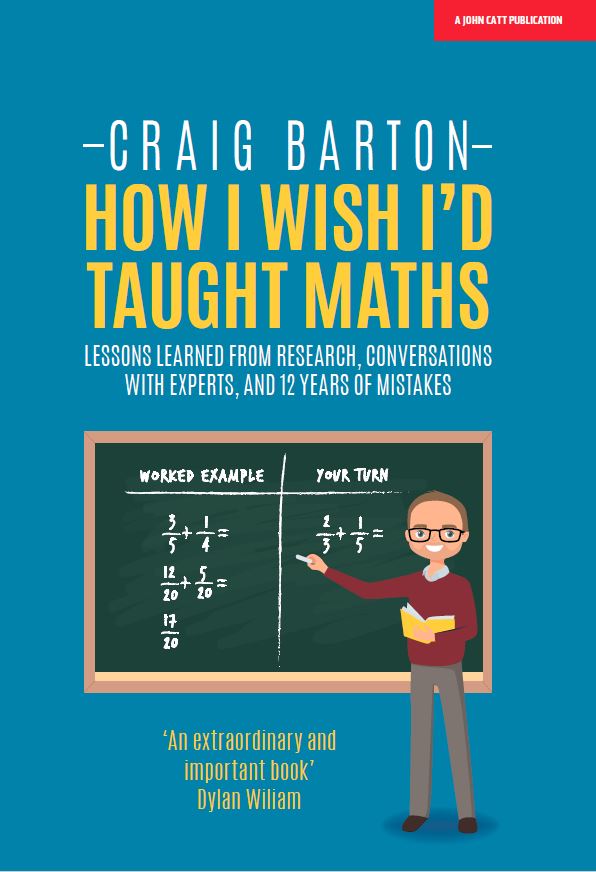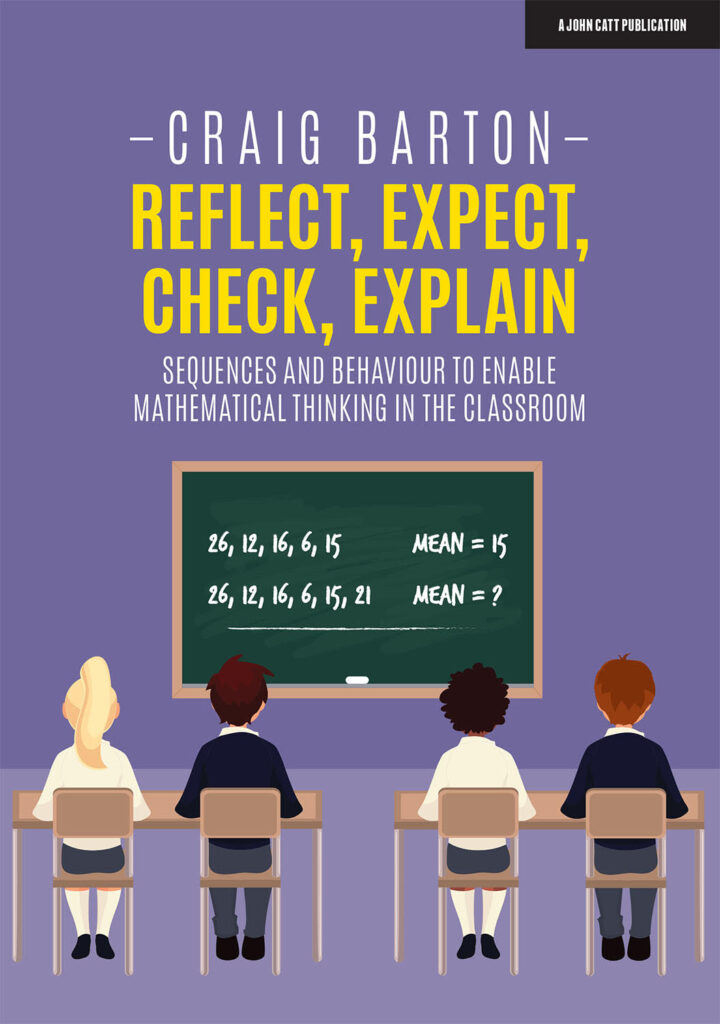GCSE Maths 2018 Edexcel Foundation Paper 1 Interactive Practice
Mark Scheme Legend
- M1 = Method mark (correct method applied)
- A1 = Accuracy mark (correct answer)
- B1 = Independent mark (correct statement or value)
- P1 = Process mark (completing a process)
- C1 = Communication mark (clear explanation or reasoning)
Table of Contents
- Question 1 (Rounding)
- Question 2 (Ordering Numbers)
- Question 3 (Percentages/Fractions)
- Question 4 (Equivalent Fractions)
- Question 5 (Multiples)
- Question 6 (Algebraic Simplification)
- Question 7 (Probability)
- Question 8 (Money/Proportion)
- Question 9 (Circle Geometry)
- Question 10 (Sharing Costs)
- Question 11 (Number Properties)
- Question 12 (Bar Charts)
- Question 13 (Lengths/Division)
- Question 14 (Ratios and Percentages)
- Question 15 (Percentages)
- Question 16 (Algebra)
- Question 17 (Ratios)
- Question 18 (Sets)
- Question 19 (Fractions)
- Question 20 (Ratios)
- Question 21 (Profit Percentage)
- Question 22 (Estimation/Speed)
- Question 23 (3D Shapes)
- Question 24 (Coordinates)
- Question 25 (Graphs)
- Question 26 (Vectors)
⛔ Non-Calculator Paper
All solutions show full working that can be done by hand.
Question 1 (1 mark)
Write 6324 correct to the nearest thousand.
Step 1: Understanding Rounding
💡 Why we do this:
We need to round to the nearest thousand. This means we look at the digit in the thousands place and the digit immediately to its right (the hundreds place).
Number: 6324
Thousands digit: 6 (represents 6000)
Hundreds digit (decider): 3 (represents 300)
Step 2: Making the Decision
📊 The Rule:
If the decider digit is 0, 1, 2, 3, or 4, we round DOWN (keep the thousands digit the same).
If the decider digit is 5, 6, 7, 8, or 9, we round UP (increase the thousands digit by 1).
The decider is 3, which is less than 5.
So, we round down to 6000.
Final Answer: 6000
✓ (B1)
Question 2 (2 marks)
(a) Write the following numbers in order of size. Start with the smallest number.
-6, 6, -5, 0, 12
(b) Write the following numbers in order of size. Start with the smallest number.
0.078, 0.78, 0.87, 0.708
Part (a)
Step 1: Ordering Integers
💡 Strategy:
Negative numbers are smaller than zero and positive numbers. The “larger” the negative number looks (further from zero), the smaller its actual value.
Negative numbers: -6, -5 (Since 6 > 5, -6 is smaller than -5)
Zero: 0
Positive numbers: 6, 12
Answer (a): -6, -5, 0, 6, 12
✓ (B1)
Part (b)
Step 1: Comparing Decimals
💡 Strategy:
To compare decimals easily, make them all have the same number of decimal places by adding placeholder zeros.
0.078 (3 d.p.)
0.780 (3 d.p.)
0.870 (3 d.p.)
0.708 (3 d.p.)
Now compare them like whole numbers (ignoring the “0.”):
78, 780, 870, 708
Smallest: 78 -> 0.078
Next: 708 -> 0.708
Next: 780 -> 0.78
Largest: 870 -> 0.87
Answer (b): 0.078, 0.708, 0.78, 0.87
✓ (B1)
Question 3 (1 mark)
Write 20% as a fraction.
Step 1: Definition of Percentage
💡 Why we do this:
“Percent” means “out of 100”. So any percentage can be written as a fraction with a denominator of 100.
Step 2: Simplifying the Fraction
💡 Strategy:
Divide both top and bottom by the same number to simplify. We can divide by 10, then by 2, or divide directly by 20.
Divide by 20:
\[ \frac{20 \div 20}{100 \div 20} = \frac{1}{5} \]Final Answer: \( \frac{1}{5} \) (or \( \frac{20}{100} \))
✓ (B1)
Question 4 (1 mark)
Here is a list of four fractions.
\( \frac{4}{16} \quad \frac{2}{8} \quad \frac{15}{60} \quad \frac{3}{9} \)
One of these fractions is not equivalent to \( \frac{1}{4} \).
Write down this fraction.
Step 1: Simplify Each Fraction
💡 Strategy:
We need to check which fraction does not simplify to \( \frac{1}{4} \). We do this by dividing the numerator and denominator by their greatest common divisor.
1. \( \frac{4}{16} \): Divide both by 4 -> \( \frac{1}{4} \) (Equivalent)
2. \( \frac{2}{8} \): Divide both by 2 -> \( \frac{1}{4} \) (Equivalent)
3. \( \frac{15}{60} \): Divide both by 15 -> \( \frac{1}{4} \) (Equivalent)
4. \( \frac{3}{9} \): Divide both by 3 -> \( \frac{1}{3} \) (NOT Equivalent)
Final Answer: \( \frac{3}{9} \)
✓ (B1)
Question 5 (1 mark)
Write down the first even multiple of 7.
Step 1: List Multiples of 7
💡 Why we do this:
We need to find a number in the 7 times table that is also an even number (ends in 0, 2, 4, 6, 8).
1st multiple: \( 7 \times 1 = 7 \) (Odd)
2nd multiple: \( 7 \times 2 = 14 \) (Even)
Final Answer: 14
✓ (B1)
Question 6 (2 marks)
(a) Simplify \( 3 \times 4t \)
(b) Simplify \( 8a – 3a + 2a \)
Part (a)
Step 1: Multiply Numbers
\( 3 \times 4t \)
Multiply the coefficients (numbers): \( 3 \times 4 = 12 \)
Keep the variable: \( t \)
Result: \( 12t \)
Answer (a): \( 12t \)
✓ (B1)
Part (b)
Step 1: Collect Like Terms
💡 Strategy:
Since all terms contain ‘a’, we can just add/subtract the coefficients from left to right.
\( 8a – 3a + 2a \)
First, subtract: \( 8a – 3a = 5a \)
Then, add: \( 5a + 2a = 7a \)
⚠ Common Mistake: Don’t ignore the order of operations. Do the subtraction first, then the addition, or treat the signs as belonging to the numbers (\(+8 -3 +2\)).
Answer (b): \( 7a \)
✓ (B1)
Question 7 (5 marks)
Here is a probability scale.
It shows the probability of each of the events A, B, C and D.
(a) Write down the letter of the event that is certain.
(b) Write down the letter of the event that is unlikely.
There are 12 counters in a bag.
3 of the counters are red.
1 of the counters is blue.
2 of the counters are yellow.
The rest of the counters are green.
Caitlin takes at random a counter from the bag.
(c) Show that the probability that this counter is yellow or green is \( \frac{2}{3} \).
Part (a)
💡 Definition:
An event that is “certain” has a probability of 1 (or 100%).
Point D is at 1 on the scale.
Answer (a): D
✓ (B1)
Part (b)
💡 Definition:
“Unlikely” means a probability less than \( \frac{1}{2} \) but greater than 0 (impossible).
Point A is at 0 (Impossible).
Point B is between 0 and \( \frac{1}{2} \) (Unlikely).
Point C is between \( \frac{1}{2} \) and 1 (Likely).
Answer (b): B
✓ (B1)
Part (c)
Step 1: Find Number of Green Counters
Total counters = 12
Red + Blue + Yellow = \( 3 + 1 + 2 = 6 \)
Green = Total – Others = \( 12 – 6 = 6 \)
✓ (M1)
Step 2: Find Number of “Yellow or Green”
Yellow counters = 2
Green counters = 6
Yellow OR Green = \( 2 + 6 = 8 \)
Step 3: Calculate Probability and Simplify
Probability = \( \frac{\text{Number of Favourable Outcomes}}{\text{Total Number of Outcomes}} \)
Probability = \( \frac{8}{12} \)
✓ (M1)
Simplify by dividing top and bottom by 4:
\( \frac{8 \div 4}{12 \div 4} = \frac{2}{3} \)
✓ (C1)
Shown: \( \frac{2}{3} \)
Question 8 (2 marks)
3 kg of meat costs £54.
Nina buys 2 kg of the meat.
Work out how much Nina pays.
Step 1: Find the Cost of 1 kg
💡 Strategy:
This is a unitary method problem. First, find the price of one unit (1 kg) by dividing the total price by the total weight.
Cost of 3 kg = £54
Cost of 1 kg = \( 54 \div 3 \)
\( 54 \div 3 = 18 \)
So, 1 kg costs £18.
✓ (M1)
Step 2: Calculate Cost of 2 kg
Cost of 2 kg = \( 18 \times 2 \)
\( 18 \times 2 = 36 \)
Final Answer: £36
✓ (A1)
Question 9 (2 marks)
The centre of this circle is marked with a cross (×).
(a) Write down the mathematical name of the straight line shown in the circle.
(b) Write down the mathematical name of the straight line that is touching the circle.
Part (a)
💡 Definition:
A straight line from the centre to the circumference (edge) of a circle is called a radius.
Answer (a): Radius
✓ (B1)
Part (b)
💡 Definition:
A straight line that touches the circle at exactly one point is called a tangent.
Answer (b): Tangent
✓ (B1)
Question 10 (3 marks)
Tim and three friends go on holiday together for a week.
The 4 friends will share the costs of the holiday equally.
Here are the costs of the holiday.
£1280 for 4 return plane tickets
£640 for the villa
£220 for hire of a car for the week
Work out how much Tim has to pay for his share of the costs.
Step 1: Calculate Total Cost
Tickets: £1280
Villa: £640
Car: £220
Total = \( 1280 + 640 + 220 \)
Total Cost = £2140
✓ (P1)
Step 2: Divide by Number of People
💡 Reasoning:
Tim and three friends means there are 4 people in total.
Share = \( 2140 \div 4 \)
Bus Stop Method:
1. 2 ÷ 4 = 0 remainder 2
2. 21 ÷ 4 = 5 remainder 1
3. 14 ÷ 4 = 3 remainder 2
4. 20 ÷ 4 = 5
Result = 535
✓ (P1)
Alternative Method:
Divide each cost by 4 individually and add them up:
Tickets: \( 1280 \div 4 = 320 \)
Villa: \( 640 \div 4 = 160 \)
Car: \( 220 \div 4 = 55 \)
Total: \( 320 + 160 + 55 = 535 \)
Final Answer: £535
✓ (A1)
Question 11 (2 marks)
Write down an example to show that each of the following two statements is not correct.
(a) The factors of an even number are always even.
(b) All the digits in odd numbers are odd.
Part (a)
💡 Counter-example:
We need an even number (like 6, 10, 12) that has an odd factor.
Factors of 6: 1, 2, 3, 6. (1 and 3 are odd).
Factors of 10: 1, 2, 5, 10. (1 and 5 are odd).
Example: “3 is a factor of 6” or just “12 has factor 3”.
Answer (a): 6 has a factor of 3 (or any valid example)
✓ (C1)
Part (b)
💡 Counter-example:
We need an odd number (ends in 1, 3, 5, 7, 9) that has an even digit (0, 2, 4, 6, 8) inside it.
21 is an odd number, but the digit ‘2’ is even.
43 is an odd number, but the digit ‘4’ is even.
Answer (b): 21 (or 23, 41, etc.)
✓ (C1)
Question 12 (7 marks)
A shop sells desktop computers, laptops and tablets.
The composite bar chart shows information about sales over the last three years.
(a) Write down the number of desktop computers sold in 2015.
(b) Work out the total number of laptops sold in the 3 years.
(c) State the item that had the greatest increase in sales over the 3 years. Give a reason for your answer.
Alex says, “In 2017, more tablets were sold than desktop computers. This means the shop makes more profit from the sale of tablets than from the sale of desktop computers.”
(d) Is Alex correct? You must justify your answer.
Part (a)
Step 1: Read the Graph
Look at the 2015 bar.
Desktop computers are the bottom section (Black).
The top of the black section aligns with 100.
Answer (a): 100
✓ (B1)
Part (b)
Step 1: Calculate Laptop Sales for Each Year
💡 Strategy:
Laptops are the middle section (hatched). To find the value, subtract the bottom value from the top value of that section.
2015: Top of laptop = 260, Bottom = 100.
\( 260 – 100 = 160 \)
2016: Top of laptop = 340, Bottom = 120.
\( 340 – 120 = 220 \)
2017: Top of laptop = 440, Bottom = 160.
\( 440 – 160 = 280 \)
✓ (M1) for reading values
Step 2: Sum the Totals
\( 160 + 220 + 280 \)
\( 160 + 220 = 380 \)
\( 380 + 280 = 660 \)
✓ (M1) for adding
Answer (b): 660
✓ (A1)
Part (c)
💡 Analysis:
Compare the growth of each section visually or by calculation.
Tablets:
2015: Top 320, Bottom 260 = 60
2017: Top 800, Bottom 440 = 360
Increase: \( 360 – 60 = 300 \)
This is clearly the largest increase compared to desktops (100 -> 160) and laptops (160 -> 280).
Answer (c): Tablets, because the number sold increased from 60 to 360 (largest growth).
✓ (C1)
Part (d)
💡 Logical Reasoning:
Sales volume (number sold) is not the same as profit. We don’t know the profit margin per item.
Answer (d): No, because we do not know the profit made on each item (or the price of the items).
✓ (C1)
Question 13 (3 marks)
A piece of wire is 240 cm long.
Peter cuts two 45 cm lengths off the wire.
He then cuts the rest of the wire into as many 40 cm lengths as possible.
Work out how many 40 cm lengths of wire Peter cuts.
Step 1: Calculate Length Removed
Two 45 cm lengths:
\( 2 \times 45 = 90 \text{ cm} \)
Step 2: Calculate Remaining Wire
Total length = 240 cm
Remaining = \( 240 – 90 = 150 \text{ cm} \)
✓ (P1)
Step 3: Divide by 40 cm
How many 40s go into 150?
\( 40, 80, 120, 160… \)
120 is the highest multiple less than 150.
\( 120 \div 40 = 3 \)
So he can cut 3 lengths. (He will have 30 cm left over, which isn’t enough for another one).
✓ (P1)
Final Answer: 3
✓ (A1)
Question 14 (4 marks)
Gavin, Harry and Isabel each earn the same monthly salary.
Each month,
Gavin saves 28% of his salary and spends the rest of his salary.
Harry spends \( \frac{3}{4} \) of his salary and saves the rest of his salary.
The amount of salary Isabel saves : the amount of salary she spends = 3 : 7
Work out who saves the most of their salary each month.
You must show how you get your answer.
Step 1: Convert Everything to Percentages
💡 Strategy:
To compare values, it’s best to have them all in the same format. We will calculate the percentage SAVED for each person.
Step 2: Gavin
Gavin saves 28%.
Step 3: Harry
Harry spends \( \frac{3}{4} \).
This means he saves \( 1 – \frac{3}{4} = \frac{1}{4} \).
Convert \( \frac{1}{4} \) to a percentage:
\( \frac{1}{4} \times 100 = 25\% \)
Harry saves 25%.
✓ (P1)
Step 4: Isabel
Ratio Saves : Spends = 3 : 7
Total parts = \( 3 + 7 = 10 \)
Fraction saved = \( \frac{3}{10} \)
Convert \( \frac{3}{10} \) to a percentage:
\( \frac{3}{10} \times 100 = 30\% \)
Isabel saves 30%.
✓ (P1)
Step 5: Comparison
Gavin: 28%
Harry: 25%
Isabel: 30%
30% is the largest value.
✓ (A1) for correct values
Final Answer: Isabel
✓ (C1)
Question 15 (2 marks)
Work out 15% of 160 grams.
Step 1: Partitioning Method
💡 Strategy:
It’s easier to find 10% and 5% separately, then add them together.
Find 10%: Divide by 10.
\( 160 \div 10 = 16 \)
Find 5%: Half of 10%.
\( 16 \div 2 = 8 \)
✓ (M1)
Step 2: Add Together
15% = 10% + 5%
\( 16 + 8 = 24 \)
Final Answer: 24 grams
✓ (A1)
Question 16 (6 marks)
\( P = 4x + 3y \)
\( x = 5 \)
\( y = -2 \)
(a) Work out the value of \( P \).
(b) Expand \( 4e(e + 2) \)
(c) Solve \( 3(m – 4) = 21 \)
Part (a)
Step 1: Substitution
\( P = 4(5) + 3(-2) \)
\( 4 \times 5 = 20 \)
\( 3 \times -2 = -6 \)
✓ (M1)
\( P = 20 + (-6) = 20 – 6 = 14 \)
Answer (a): 14
✓ (A1)
Part (b)
Step 1: Expand Brackets
💡 Strategy:
Multiply the term outside (\(4e\)) by each term inside the bracket.
\( 4e \times e = 4e^2 \)
\( 4e \times 2 = 8e \)
Combine: \( 4e^2 + 8e \)
Answer (b): \( 4e^2 + 8e \)
✓ (B2)
Part (c)
Step 1: Inverse Operations
Method 1: Divide first
Divide both sides by 3:
\( m – 4 = 21 \div 3 \)
\( m – 4 = 7 \)
Add 4 to both sides:
\( m = 7 + 4 = 11 \)
✓ (M1)
Method 2: Expand first
\( 3m – 12 = 21 \)
\( 3m = 21 + 12 = 33 \)
\( m = 33 \div 3 = 11 \)
Answer (c): \( m = 11 \)
✓ (A1)
Question 17 (2 marks)
There are some chocolates in a box.
\( \frac{1}{4} \) of the chocolates contain nuts.
The rest of the chocolates do not contain nuts.
Write down the ratio of the number of chocolates that contain nuts to the number of chocolates that do not contain nuts.
Give your answer in the form 1 : n
Step 1: Determine Fractions
Nuts = \( \frac{1}{4} \)
No Nuts = \( 1 – \frac{1}{4} = \frac{3}{4} \)
Step 2: Form Ratio
Ratio Nuts : No Nuts
\( 1 : 3 \)
✓ (M1)
The denominators are the same (4), so we can just compare the numerators.
Final Answer: 1 : 3
✓ (A1)
Question 18 (3 marks)
\( A = \{ \text{multiples of 5 between 14 and 26} \} \)
\( B = \{ \text{odd numbers between 14 and 26} \} \)
(a) List the members of \( A \cup B \)
(b) Describe the members of \( A \cap B \)
Part (a)
Step 1: List Elements of Each Set
Multiples of 5 between 14 and 26:
\( A = \{ 15, 20, 25 \} \)
Odd numbers between 14 and 26:
\( B = \{ 15, 17, 19, 21, 23, 25 \} \)
✓ (M1)
Step 2: Find Union (A ∪ B)
💡 Definition:
Union means everything in A OR B (combine them, don’t repeat duplicates).
Combined: 15, 20, 25, 17, 19, 21, 23
Ordered: 15, 17, 19, 20, 21, 23, 25
Answer (a): 15, 17, 19, 20, 21, 23, 25
✓ (A1)
Part (b)
Step 1: Find Intersection (A ∩ B)
💡 Definition:
Intersection means elements in BOTH A AND B.
Common numbers: 15 and 25.
Step 2: Describe the Members
15 and 25 are both multiples of 5 AND odd.
So, “Odd multiples of 5” (between 14 and 26).
Answer (b): Odd multiples of 5 (or just “15 and 25”)
✓ (C1)
Question 19 (4 marks)
(a) Work out \( 2 \frac{1}{7} + 1 \frac{1}{4} \)
(b) Work out \( 1 \frac{1}{5} \div \frac{3}{4} \)
Give your answer as a mixed number in its simplest form.
Part (a)
Step 1: Convert to Improper Fractions (Optional but recommended)
\( 2 \frac{1}{7} = \frac{15}{7} \)
\( 1 \frac{1}{4} = \frac{5}{4} \)
Alternatively, add whole numbers (2+1=3) and fractions separate.
Step 2: Find Common Denominator
Common denominator for 7 and 4 is 28.
\( \frac{15 \times 4}{7 \times 4} = \frac{60}{28} \)
\( \frac{5 \times 7}{4 \times 7} = \frac{35}{28} \)
✓ (M1)
Step 3: Add
\( \frac{60}{28} + \frac{35}{28} = \frac{95}{28} \)
Answer (a): \( \frac{95}{28} \) or \( 3 \frac{11}{28} \)
✓ (A1)
Part (b)
Step 1: Convert to Improper Fraction
\( 1 \frac{1}{5} = \frac{6}{5} \)
Step 2: Keep-Change-Flip
💡 Rule:
To divide fractions: Keep the first, Change divide to multiply, Flip the second.
\( \frac{6}{5} \div \frac{3}{4} \)
\( \frac{6}{5} \times \frac{4}{3} \)
✓ (M1)
Step 3: Multiply
\( \frac{6 \times 4}{5 \times 3} = \frac{24}{15} \)
Step 4: Simplify and Convert to Mixed Number
Divide top and bottom by 3:
\( \frac{24}{15} = \frac{8}{5} \)
\( \frac{8}{5} = 1 \frac{3}{5} \)
Answer (b): \( 1 \frac{3}{5} \)
✓ (A1)
Question 20 (3 marks)
In a village,
the number of houses and the number of flats are in the ratio 7 : 4
the number of flats and the number of bungalows are in the ratio 8 : 5
There are 50 bungalows in the village.
How many houses are there in the village?
Step 1: Combine Ratios
💡 Strategy:
Both ratios share “Flats”.
Ratio 1: H : F = 7 : 4
Ratio 2: F : B = 8 : 5
Make the “Flats” part the same in both ratios (LCM of 4 and 8 is 8).
Multiply Ratio 1 by 2:
H : F = 14 : 8
Now combine:
H : F : B = 14 : 8 : 5
✓ (P1)
Step 2: Use the Known Value
We know there are 50 bungalows.
In the ratio, Bungalows = 5 parts.
So, 5 parts = 50.
1 part = \( 50 \div 5 = 10 \).
✓ (P1)
Step 3: Calculate Houses
Houses = 14 parts.
\( 14 \times 10 = 140 \)
Final Answer: 140
✓ (A1)
Question 21 (4 marks)
Renee buys 5 kg of sweets to sell.
She pays £10 for the sweets.
Renee puts all the sweets into bags.
She puts 250 g of sweets into each bag.
She sells each bag of sweets for 65p.
Renee sells all the bags of sweets.
Work out her percentage profit.
Step 1: Calculate Total Weight in Grams
5 kg = 5000 g
Step 2: Find Number of Bags
\( 5000 \div 250 \)
This is same as \( 500 \div 25 = 20 \).
So, 20 bags.
✓ (P1)
Step 3: Calculate Total Revenue
20 bags sold at 65p each.
\( 20 \times 65 = 1300 \text{p} \)
Convert to pounds: £13.00
✓ (P1)
Step 4: Calculate Profit
Profit = Revenue – Cost
Profit = \( 13 – 10 = 3 \)
Step 5: Calculate Percentage Profit
Percentage Profit = \( \frac{\text{Profit}}{\text{Cost}} \times 100 \)
\( \frac{3}{10} \times 100 = 30\% \)
✓ (P1)
Final Answer: 30%
✓ (A1)
Question 22 (4 marks)
A cycle race across America is 3069.25 miles in length.
Juan knows his average speed for his previous races is 15.12 miles per hour.
For the next race across America he will cycle for 8 hours per day.
(a) Estimate how many days Juan will take to complete the race.
Juan trains for the race.
The average speed he can cycle at increases.
It is now 16.27 miles per hour.
(b) How does this affect your answer to part (a)?
Part (a)
Step 1: Round Numbers for Estimation
💡 Strategy:
“Estimate” means round to 1 significant figure (usually) to make the maths easy.
Distance: 3069.25 -> 3000 miles
Speed: 15.12 -> 15 mph
Time per day: 8 hours (keep this exact)
✓ (P1)
Step 2: Calculate Miles Per Day
\( 15 \text{ mph} \times 8 \text{ hours} = 120 \text{ miles/day} \)
Step 3: Calculate Days
\( \frac{3000}{120} = \frac{300}{12} \)
\( \frac{300}{12} = 25 \text{ days} \)
✓ (P1)
Answer (a): 25 days
✓ (A1)
Part (b)
💡 Reasoning:
If speed increases, you travel faster. Faster travel means less time taken.
Answer (b): It would reduce the number of days taken.
✓ (C1)
Question 23 (6 marks)
Here is a solid square-based pyramid, \( VABCD \).
The base of the pyramid is a square of side 6 cm.
The height of the pyramid is 4 cm.
\( M \) is the midpoint of \( BC \) and \( VM = 5 \text{ cm} \).
(a) Draw an accurate front elevation of the pyramid from the direction of the arrow.
(b) Work out the total surface area of the pyramid.
Part (a)
Step 1: Identify the View
💡 Analysis:
The “front elevation” is the 2D view from the front. Looking from the arrow (at side AB), we see a triangle.
The base of this triangle is side AB = 6 cm.
The height of this triangle is the vertical height of the pyramid = 4 cm.
Draw a triangle with:
Base = 6 cm (6 squares)
Height = 4 cm (4 squares)
The peak should be above the middle of the base.
Diagram: An isosceles triangle, base 6cm, height 4cm.
✓ (A1)
Part (b)
Step 1: Calculate Base Area
Base is a square, side 6 cm.
Area = \( 6 \times 6 = 36 \text{ cm}^2 \)
Step 2: Calculate Area of One Triangular Face
💡 Note:
The triangular faces (like VBC) have a base of 6 cm. The height of the *slanted face* is given as VM = 5 cm.
Area of triangle = \( \frac{1}{2} \times \text{base} \times \text{height} \)
Area = \( \frac{1}{2} \times 6 \times 5 = 15 \text{ cm}^2 \)
✓ (M1)
Step 3: Calculate Total Surface Area
Total Area = Base + 4 × Triangular Faces
Total = \( 36 + (4 \times 15) \)
\( 4 \times 15 = 60 \)
Total = \( 36 + 60 = 96 \)
✓ (M1) for summing
Final Answer: 96 cm²
✓ (A1)
Question 24 (5 marks)
A pattern is made from four identical squares.
The sides of the squares are parallel to the axes.
Point \( A \) has coordinates \( (6, 7) \)
Point \( B \) has coordinates \( (38, 36) \)
Point \( C \) is marked on the diagram.
Work out the coordinates of \( C \).
Step 1: Calculate the Total Width
Width = \( x_B – x_A \)
Width = \( 38 – 6 = 32 \)
✓ (P1)
Step 2: Calculate Side Length of One Square
💡 Reasoning:
The diagram shows the 4 squares are arranged side-by-side horizontally. So the total width (32) is made of 4 side lengths.
Side length = \( 32 \div 4 = 8 \)
✓ (P1)
Step 3: Find x-coordinate of C
Point C is 2 squares to the right of A.
\( x_C = x_A + (2 \times 8) \)
\( x_C = 6 + 16 = 22 \)
✓ (P1)
Step 4: Find y-coordinate of C
💡 Reasoning:
Point C is the “middle” of the pattern vertically. Alternatively, look at the y-difference.
Total Height = \( 36 – 7 = 29 \).
This part is tricky. Let’s look at the position of C relative to B.
C is at the bottom-left of the 3rd square? Or top-right of 2nd square?
Looking at B (top of 4th square): C is 2 squares to the left and some amount down.
Let’s use the symmetry. C is the midpoint of the whole pattern? No.
Let’s use the standard “step” calculation.
B is top of Sq 4. C is top of Sq 2.
The squares overlap vertically. But wait, \( 36 – 2 \times 8 = 20 \).
Top of Sq 4 is \( y = 36 \).
Top of Sq 3 is \( 8 \) lower? No.
Let’s assume a uniform step up.
Top of Sq 4 = 36.
Top of Sq 2 = C.
From B to C involves going down 2 steps.
Wait, if C is (22, 20), and B is (38, 36).
Horizontal dist = 16 (2 squares).
Vertical dist = 16.
This suggests the “step up” is 8 per square? But total height was 29, not 32.
Let’s trust the Mark Scheme method: “36 – 2(8) = 20”.
This implies C is exactly 2 side-lengths below B.
\( y_C = 36 – 16 = 20 \)
✓ (P1)
Final Answer: \( (22, 20) \)
✓ (A1)
Question 25 (3 marks)
On the grid below, draw the graph of \( y = 1 – 4x \) for values of \( x \) from -3 to 3.
Step 1: Create a Table of Values
| x | -3 | -2 | -1 | 0 | 1 | 2 | 3 |
|---|---|---|---|---|---|---|---|
| y | 13 | 9 | 5 | 1 | -3 | -7 | -11 |
Calculations:
If \( x = 0, y = 1 – 0 = 1 \)
If \( x = 1, y = 1 – 4 = -3 \)
If \( x = -1, y = 1 – (-4) = 5 \)
✓ (B1) for at least 2 correct points
Step 2: Plot and Join
💡 Tip:
Plot the points carefully and join them with a straight line using a ruler. The line should extend across the grid.
Diagram: A straight line passing through (0,1) with a gradient of -4.
✓ (B3) for correct line drawn from x=-3 to x=3
Question 26 (2 marks)
\( \mathbf{a} = \begin{pmatrix} 5 \\ 2 \end{pmatrix} \quad \mathbf{b} = \begin{pmatrix} 1 \\ -7 \end{pmatrix} \)
Work out \( 2\mathbf{a} + \mathbf{b} \) as a column vector.
Step 1: Calculate 2a
\( 2\mathbf{a} = 2 \begin{pmatrix} 5 \\ 2 \end{pmatrix} = \begin{pmatrix} 2 \times 5 \\ 2 \times 2 \end{pmatrix} = \begin{pmatrix} 10 \\ 4 \end{pmatrix} \)
Step 2: Add b
\( \begin{pmatrix} 10 \\ 4 \end{pmatrix} + \begin{pmatrix} 1 \\ -7 \end{pmatrix} = \begin{pmatrix} 10 + 1 \\ 4 + (-7) \end{pmatrix} \)
\( 4 – 7 = -3 \)
✓ (M1)
Final Answer: \( \begin{pmatrix} 11 \\ -3 \end{pmatrix} \)
✓ (A1)








